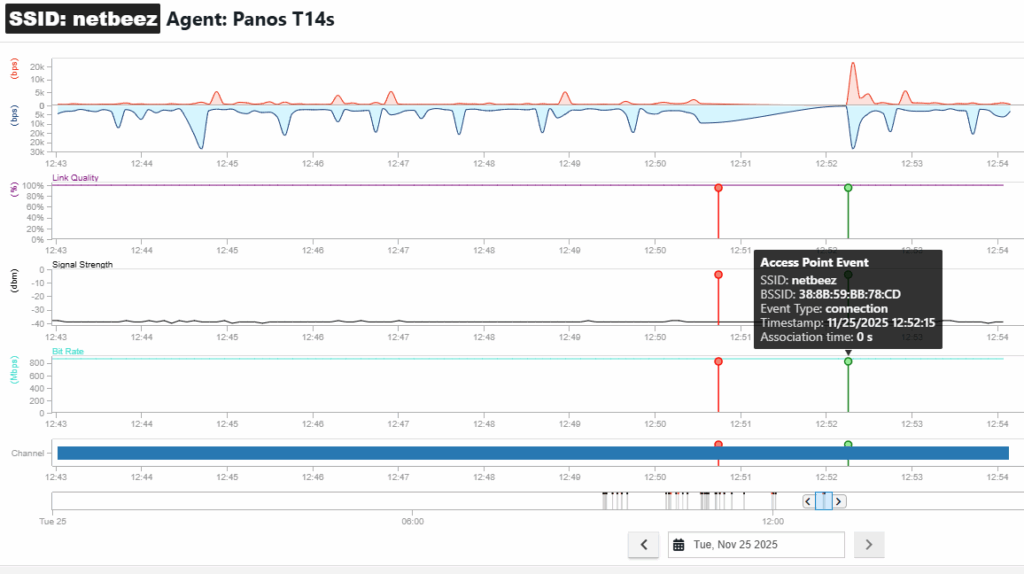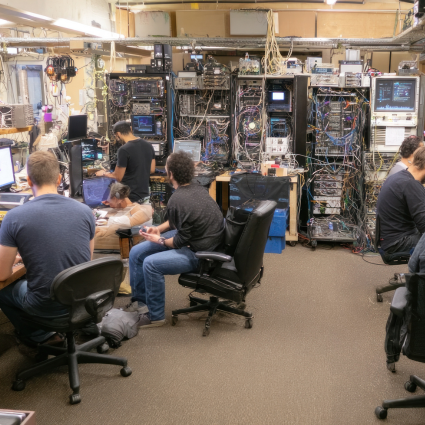Monitoring Remote Workers’ Networks: Why It Matters and How NetBeez Helps
When a user reports that “Zoom keeps freezing” or “VPN is slow,” the root cause could be anywhere between the device and the cloud. That’s why network performance monitoring for remote workers has become essential. IT teams need visibility into what users are experiencing in real time, especially when the problem lies in the last mile: the user’s WiFi or home internet connection.
WiFi: The Most Common Culprit
While broadband outages and ISP congestion can cause issues, WiFi is by far the most common source of poor performance for remote users. Home networks often rely on consumer-grade routers with inconsistent signal coverage, limited channel management, or outdated firmware. In dense urban environments, especially apartment buildings, users face channel interference and signal overlap from dozens of nearby networks. And for those working from cafés, hotels, or co-working spaces, WiFi performance can fluctuate wildly depending on how many people connect or how the network is configured.
These issues result in jitter, packet loss, or unstable connectivity — all of which degrade video calls, VoIP, and cloud application performance. NetBeez helps IT teams detect these problems quickly by measuring WiFi signal strength, link quality, connection history, and upstream metrics like latency and packet loss. Instead of guessing whether the problem is the application or the network, teams can pinpoint whether the user is on WiFi, how strong their connection is, and whether it has been dropping or fluctuating.
Top Issues for WFH Workforce (Source EMA Research – Post-Pandemic Networking – 2021)

The Ethernet Mandate
Because WiFi introduces so many unknowns, many organizations advise remote workers to use wired Ethernet whenever possible — even at home. A wired connection eliminates interference, stabilizes latency, and provides a consistent throughput baseline. Some companies even include Ethernet adapters in their remote-work equipment kits for this reason.
NetBeez supports this best practice by showing the laptop’s WiFi association and disassociation events directly on the dashboard. IT teams can immediately see when a laptop switches from Ethernet to WiFi or when the WiFi connection becomes unstable. This data is crucial for diagnosing issues and guiding users toward better setups.

Helping Users Help Themselves
A recent customer requested the feature to correlate the WiFi connection with an alert. Building upon this, we’re experimenting with a simple but powerful enhancement: local pop-up notifications when a worker connects via WiFi. For example, if an endpoint detects that the Windows host has switched from Ethernet to WiFi, it can trigger a notification reminding the user that a wired connection provides better reliability for video calls and corporate applications.
This kind of user-side automation has two major benefits. First, it helps remote workers identify and fix issues before they escalate — often without opening a ticket. Second, it reduces the support burden on IT teams, who no longer need to spend time explaining that WiFi can cause performance problems. With proactive guidance, users get better experiences, and IT gains time back.

This is just a prototype of the customer’s request and where it becomes more powerful is its combination with the NetBeez custom command! With this the possibilities of NetBeez running directly as an endpoint on each laptop are vastly expanded. By providing real-time, actionable feedback to users, IT teams can automate routine guidance and reduce support burden. For instance, messages could be fully customized to reflect corporate policies, troubleshooting tips, or even contextual alerts if a VPN disconnects or latency exceeds a threshold. Other potential use cases include automatically prompting users to restart network adapters, report connectivity issues directly to IT, or verify WiFi signal strength in home offices. By combining endpoint monitoring with automated user notifications, NetBeez can help IT teams proactively maintain network quality while empowering users to resolve simple issues themselves.





